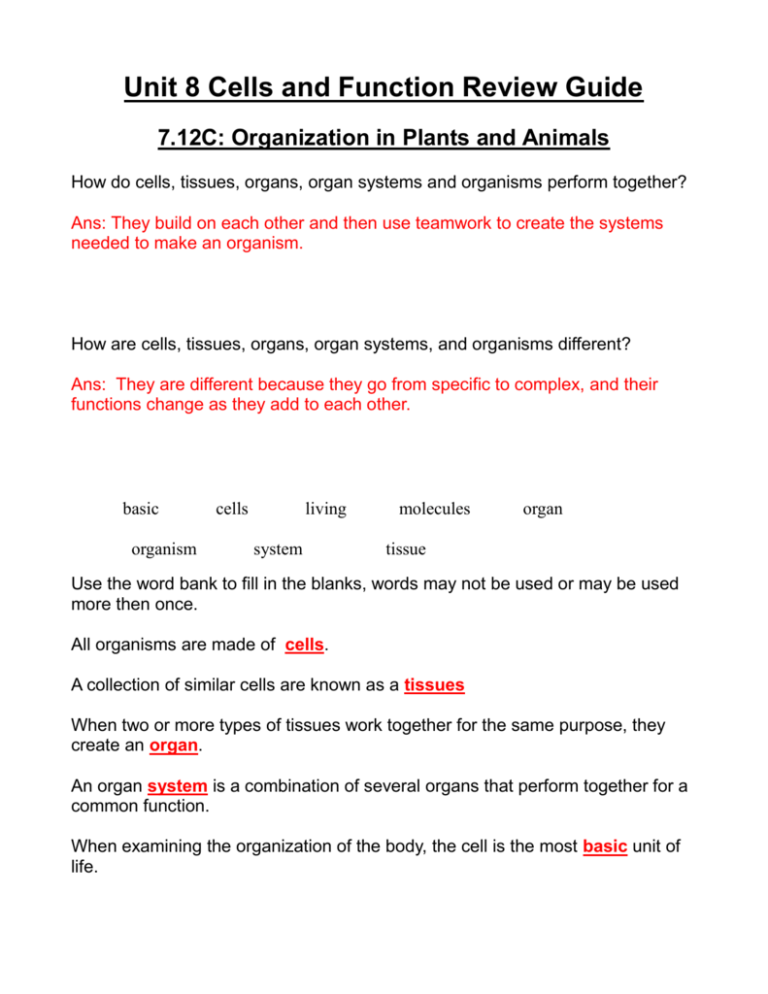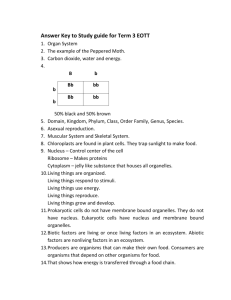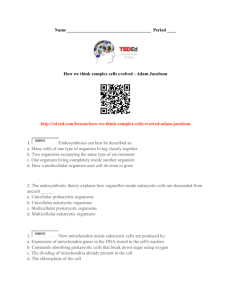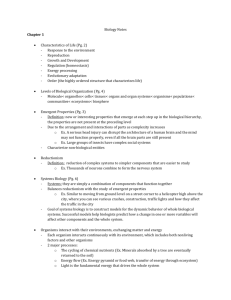cells - Images
advertisement

Unit 8 Cells and Function Review Guide 7.12C: Organization in Plants and Animals How do cells, tissues, organs, organ systems and organisms perform together? Ans: They build on each other and then use teamwork to create the systems needed to make an organism. How are cells, tissues, organs, organ systems, and organisms different? Ans: They are different because they go from specific to complex, and their functions change as they add to each other. basic organism cells living system molecules organ tissue Use the word bank to fill in the blanks, words may not be used or may be used more then once. All organisms are made of cells. A collection of similar cells are known as a tissues When two or more types of tissues work together for the same purpose, they create an organ. An organ system is a combination of several organs that perform together for a common function. When examining the organization of the body, the cell is the most basic unit of life. 7.12D: Plant and Animal Cell Organelles What are organelles? Ans: They are little organs in the cells, they provide structure and functions inside the cell. How does the nucleus help with the function of cells? Ans: It is the control center/brain of the cell, it controls all functions in the cell and contains the DNA/Chromosomes of the cell. How can the structure and function of the cell wall in plant cells be compared to that of the cell membrane? Ans: They both protect the cells What is the primary function of the cell membrane, mitochondrion, and the cytoplasm? Ans: Cell membrane – allows selective things to pass through the cell Mitochondrion – creates energy for the cell controls metabolism along with cellular respiration. Cytoplasm – jelly like substance that the organelles are sitting inside the cell Chloroplasts capture and absorb light energy in what life process? Ans: Photosynthesis cell membrane cell wall chloroplasts mitochondria nucleus organelles cytoplasm vacuole Use the word bank to fill in the blanks, words may not be used or may be used more then once. Eukaryotic plant and animal cells contain organelles that perform specific tasks for the cell’s metabolism and growth. Both plant and animal cells contain cell membrane, __Nucleus________that contains the chromosomes, Mitochrondria (creates energy), and vacuole (structure and metabolism). In addition to the organelles also found in animal cells, plant cells contain __chloroplasts___ for photosynthesis, a large central vacuole (chemical storage) and a _cell wall_______ (protection and structure). 7.12EF: Functions of a Cell cell cell theory functions many organisms single Use the word bank to fill in the blanks, words may not be used or may be used more then once. Matthias Jakob Schleiden, Theodor Schwann, and Rudolf Virchow are three scientists who studied cells. Their conclusions were combined to form the Cell _Theory . This theory concludes that a____cell________ is the basic unit of life and that all organisms are composed of cells. Some organisms are made of a single cell, such as bacteria. Other organisms are made of many cells, such as humans. Whether an organism is made of one cell or many cells, these cells must have similar functions. How do cells provide nutrients to the entire cell? Ans: the mitachrondria breaks down the nutrients into energy and the endoplasmic reticulum then transports the nutrients and energy to the other organelles How is metabolism created and how does it work in an organism? Ans: metabolism is created by the burning of sugar into carbon dioxide inside the mitochondria. The more that is burned the higher the metabolism, and the lower the amount burned the slower metabolism is. 7.12EF: Functions of a Cell - continued What is cellular respiration? Ans: The burning of sugar in the cell to release carbon dioxide. How do plant cells convert sunlight into oxygen and energy for consumption? Ans: Photosynthesis inside the chloroplasts using the cholophyll circulatory digestive energy functions mitochondria reproduce respiratory waste Use the word bank to fill in the blanks, words may not be used or may be used more then once. Because some organisms are unicellular, a single cell must perform the same functions as a multicellular organism. Both organisms and individual cells have a way to remove waste. If this remains in a cell or in a body, it can become toxic and cause death. A cell and an organism can both reproduced by forming another cell or an offspring, respectively. Both cells and organisms require a metabolic pathway to extract energy or ATP. A cell uses the mitochondria to produce its energy. An organism uses its digestive system to break down food into small molecules that can be used by the mitochondria. Both cells and organisms have a way to transport molecules, the endoplasmic reticulum and the circulatory system, respectively.









